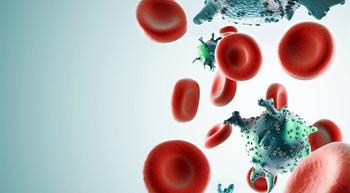
Foreign-Born Patients With HCC May Have Improved Survival Versus U.S.-Born Patients
Patients born outside of the U.S. may have improved liver cancer survival rates compared with U.S.-born patients, although more research is needed to determine what may be driving this effect, research showed.
Patients with hepatocellular carcinoma (HCC), the most common type of liver cancer, who were born outside of the United States may have better survival compared with those born in the U.S., according to findings from a recent study.
As a result of these findings, more research is needed to determine what might be the driver behind this survival benefit, said Dr. Kali Zhou, transplant hepatologist and assistant professor in the division of gastrointestinal and liver diseases at Keck School of Medicine at the University of Southern California, in an interview with CURE®.
“I think that’s the million-dollar question: what is the driver? And this study isn’t really quite setup to figure that out,” she said. “But, of course, we have some theories.”
One of these theories includes what Zhou referred to as the “healthy-immigrant effect,” which she said has been seen in all cancer types regarding the association between improved survival in immigrants compared with those born in the U.S.
“Many of the immigrants that come to the United States, either they have healthier lifestyles because of their lifestyles in their native countries, or because they are able to immigrate, maybe they are healthier to begin with,” Zhou said. “So they have less comorbid diseases that lead to higher rates of death that isn't necessarily related to the cancer itself.”
In the study published in the Journal of the National Cancer Institute, Zhou and colleagues analyzed data from 51,533 patients with HCC, of whom 40% were born outside of the U.S. Of the foreign-born patients, 92.2% were Asian/Pacific Islander, 45.2% were Hispanic, 9.1% were White and 5.8% were Black.
The main outcome that was assessed was all-cause mortality, which refers to death from any cause (including cancer).
Results demonstrated that five-year survival rates were higher in foreign-born patients vs. those born in the U.S. Nativity, or where a person is born, was linked with survival, and patients born outside of the U.S. had better survival compared with those born in the U.S.
“Certainly, socioeconomic factors might be different between the two groups,” Zhou said. “Some people postulate that social networks are potentially stronger amongst immigrants in some cases, that allows them to maybe overcome the negative aspects of potentially being an immigrant such as difficulty accessing the health care system, language barriers, etc.”
Zhou and colleagues also analyzed outcomes in patients based on regions they were born. For example, Hispanic patients born in Central and South America had lower mortality rates compared with those born in Mexico. This was also seen in Asian/Pacific Islander patients (East Asia versus Southeast Asia) and White patients (East Europe and Greater Middle East versus West/South/North Europe).
“I think even amongst immigrants, there's quite a lot of heterogeneity (or diversity),” Zhou said. “And I think the study highlights similar groups that are even at greater risk of worse outcomes. And these are sort of groups that we need to focus on, but also better understand why we're seeing these differences by region as well among the foreign born.”
For more news on cancer updates, research and education, don’t forget to




